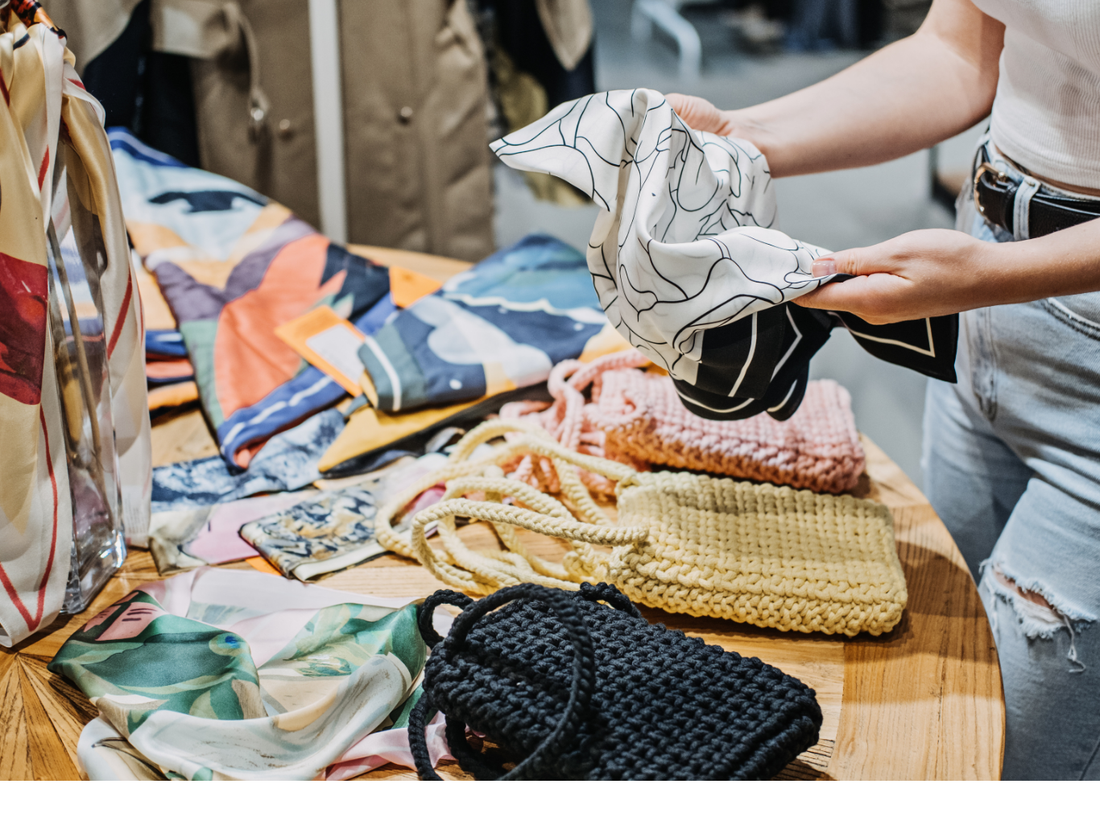
How to Build an Eco-Friendly Wardrobe with Vintage Staples
Share
In 2025, more shoppers are asking the same question: How can I make my wardrobe more sustainable without sacrificing style? The answer is simple — start with vintage clothing staples. Choosing vintage is one of the easiest ways to create an eco-friendly wardrobe that’s timeless, versatile, and better for the planet.
Here’s how to build a sustainable closet full of vintage pieces you’ll love for years to come.
1. Start with Timeless Vintage Basics
A strong eco-friendly wardrobe begins with staples you can wear again and again. Look for:
- Vintage denim → Levi’s 501s, high-waisted jeans, or denim jackets.
- Classic blazers → 80s oversized or 90s tailored cuts.
- Neutral knits → wool cardigans and sweaters.
- White shirts and blouses → crisp, versatile, and easy to layer.
These pieces never go out of style, making them the foundation of a sustainable wardrobe.
2. Add One-of-a-Kind Statement Pieces
Eco-friendly doesn’t mean boring. Use vintage to bring personality into your looks:
- Sequin or beaded tops for parties.
- Bold patterned skirts or dresses from the 70s.
- Leather jackets with natural wear and patina.
These statement items keep your style unique while avoiding fast-fashion trends that fade quickly.
3. Choose Quality Fabrics Over Fast Fashion
Many vintage garments were made before mass fast-fashion production. That means higher quality materials like:
- 100% cotton denim.
- Wool and cashmere knitwear.
- Real silk blouses.
- Sturdy leather handbags.
These fabrics not only feel better but also last longer — a core principle of sustainable fashion.
4. Shop Vintage Accessories for Everyday Use
Accessories are the easiest way to make your wardrobe eco-friendly. Try:
- Vintage scarves for layering.
- Structured handbags that outlast cheap alternatives.
- Belts and jewelry to refresh your basics.
Small items extend the life of your existing wardrobe and reduce waste.
5. Buy Less, Wear More
The most eco-friendly wardrobe is one you actually wear. Building with vintage encourages mindful shopping — choosing pieces you’ll love, wear often, and style in different ways.
Pro tip: When you find a vintage staple you love, it’s worth investing — because once it’s gone, it’s gone.
✨ Final Word: Sustainable Style is Vintage Style
Building an eco-friendly wardrobe doesn’t have to be complicated. With vintage staples, you can reduce waste, support the circular fashion economy, and still look effortlessly stylish. From vintage denim to classic blazers, every choice makes a difference.